Generation of Underground UGCC Gave Youth Experience in Keeping Faith
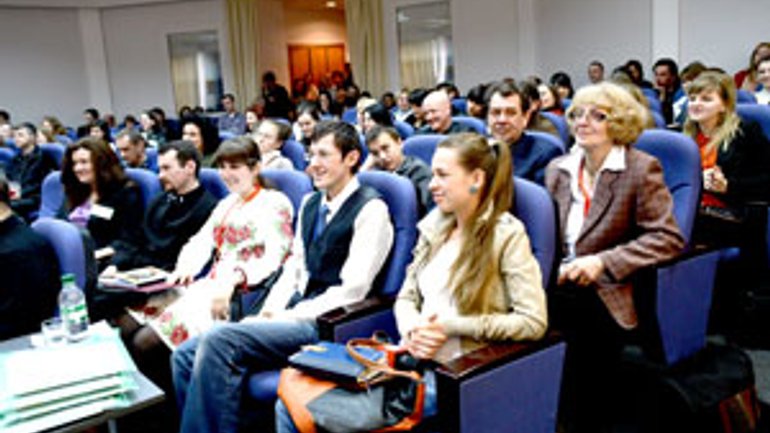
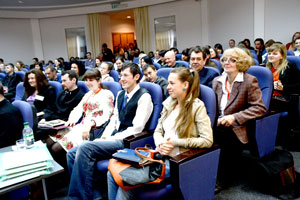 In the Ukrainian Catholic University laity and clergy of the Ukrainian Greek Catholic Church (UGCC) who were in hiding under the communist regime met with young people to share their memories of those days.
In the Ukrainian Catholic University laity and clergy of the Ukrainian Greek Catholic Church (UGCC) who were in hiding under the communist regime met with young people to share their memories of those days.
The meeting, entitled "Courage to Witness the Faith in the Modern World" was held April 17 by the St. Volodymyr Foundation, the UCU Institute of Church History, and the UCU Institute of Leadership and Management as part of the project "Dialogue of Generations."
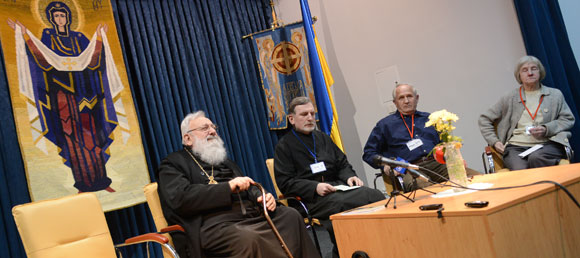
It was revealed that to be a good Christian and openly testify one’s faith is always difficult – in times of church persecution and in peaceful times.
The special guest speaker was Major Archbishop Emeritus Lubomyr Husar. In his speech he stressed the practical importance of the measure of faith.
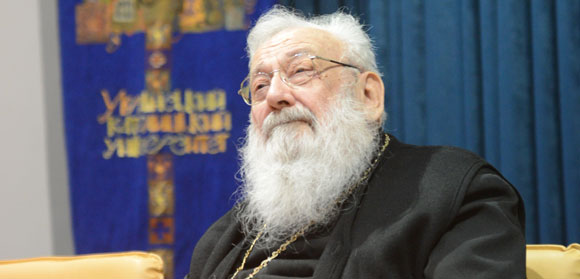
"We know about millions of martyrs in the history of the church. People gave their lives for their faith in God. They preferred to die than to betray their faith. We also know many people who did it for the sake of their beliefs. And not only religious ones," he said.
The archbishop emeritus noted that believers today must also show their faith.
"We live in difficult times. Complaints are heard everywhere. A lot of condemnation," said Cardinal Lubomyr.
"To emerge from this state can be done by testifying one’s faith, testifying true beliefs. It must happen in very practical aspects. Today, one must have great confidence to say at certain moments: I now will do so as commanded by my faith in God, as commanded by human dignity," he added.
Greek Catholic Redemptorist priest Petro Baran and Studite nun Yulita Pokhuday came to the church in times of persecution. Telling young people about the past, they spoke mostly about their spiritual mentors: Sister Yulita about her hegumeness Josefa Viter, and Fr. Petro about his father, the priest Mykhailo Vynnytsky, about Archbishop Volodymyr Sternyuk.
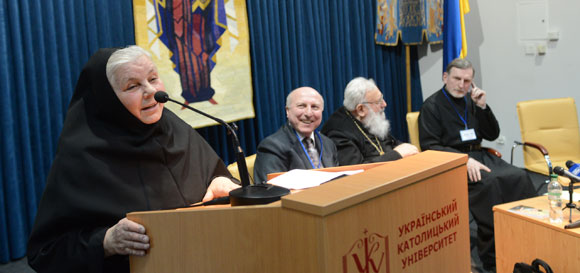
"Sister Josefa was 65 years old when I came to the monastery. She loved purity, always spoke with love. She said that in order to keep the faith, we must pray very much," said Sister Yulita.
Layman Yaroslav Hevrych because of his religious beliefs served a sentence in a labor camp. His father, a Greek Catholic priest and father of five children, did not want to go become Russian Orthodox. The priest was persecuted, and when he was released, he served the Greek Catholics in the Vinnytsia and Khmelnytsky regions.
"My father always said to us never to betray our faith. He believed that the UGCC will emerge from the underground, be reborn, and Ukraine will gain its independence," he said.
Natalia Nykolyn also suffered for her faith. In 1949 she studied at the Faculty of Philology at university. After the killing of Yaroslav Halan, persecution of the UGCC intensified in Western Ukraine. Purges began among students. One day at a meeting of Komsomol leaders of the institution she was questioned about her belief in God and her relationship to the pope. The student did not deny her faith and respect for the Roman Pontiff.
"There was an outcry in the hall. Condemnation. How can a student who has passed the exam in dialectical materialism say that!” the Communists chided me. “I said that I studied this subject, passed, but it did not change my opinion. This caused even more outrage."
In January 1950 Natalia Nykolyn and another student who behaved similarly at the meetings were expelled from the university for their religious beliefs. Then her father, who worked in the provincial department of culture, was fired. Natalia does not regret what she did. Even Khrushchev in his speech when scolding party members in Lviv mentioned two female students who dared to express their faith.
Background Information
At the beginning of World War II the UGCC had 2,387 parishes and 3.6 million faithful, 2,352 eparchial priests, 31 male and 121 female monasteries. Under the tutelage of the church functioned the Theological Academy and three Theological Seminaries where 480 students were enrolled.
After an unsuccessful attempt to force the bishops to deny communion with Rome, the Soviet authorities, gathered 216 priests under threat of death: on March 9-10, 1946, at the Cathedral of St. George (the spiritual heart of Western Ukraine) the so-called Synod of Lviv took place. The assembly nullified the Union of Brest Cathedral, which was what officially unified the Ukrainian Greek Catholic Church with the Holy See. The UGCC was forcibly annexed to the Russian Orthodox Church.
Punitive authorities arrested and deported to labor camps hundreds of priests, monks, nuns, and lay faithful, often with their wives and children. Between 1946 and 1989 the Ukrainian Greek Catholic Church was the largest banned church in the world. At the same time, it was the largest structure of public opposition to the Soviet system in the USSR.
Despite severe persecution, the church continued to live underground through an extensive system of secret seminaries, monasteries, parishes and youth groups until it was legalized December 1, 1989.
Photos by Pavlo Didula









